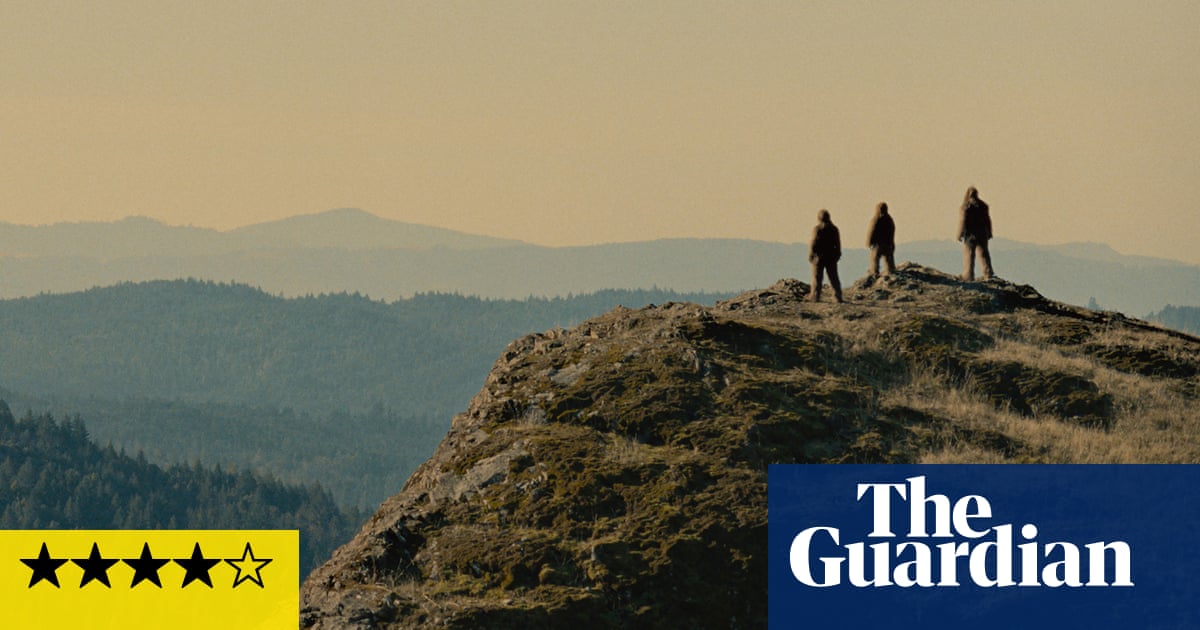
The Zellner brothers, David and Nathan, take their absurdism and futurism to the next level with a brilliant and radical comedy about the secret life of the legendary Sasquatch, AKA Bigfoot, creatures rumoured to be living in the North American wilderness. Sasquatch Sunset is a film to compare to Planet of the Apes, or Watership Down, or even the days of silent cinema. Nonverbal cinema anyway. It’s a plaintive, echoing wail of fear in that big empty forest where no one is around to hear a falling tree; fear of climate catastrophe, fear of the ongoing environmental destruction in which we don’t even fully know what’s getting destroyed; fear of humanity’s own extinction.
And as the movie begins, maybe humanity is already extinguished. We see four Sasquatch loping across a forest clearing: great, hairy, grunting, whooping, ape-like creatures: a female and three males, played without dialogue and in full prosthetic makeup by Riley Keough, Jesse Eisenberg, Nathan Zellner and Christophe Zajac-Denek. Two are in a couple and their sexual activity is observed impassively by the other two. One would-be dominant alpha appears to make a sexual move on another, having observed them in the midst of masturbatory self-discovery. He also bullies the others away from a blackberry bush he wants all for himself, on which he appears to get drunk and then hungover. Mushrooms are another dangerous stimulant. At moments of drama and stress they shriek and caper and clap their clenched fists together.
These fictional mammals also interact with actual animals – a turtle, a badger, a skunk, a snake, a big cat – and the simple juxtaposition of real and imaginary is weirdly disturbing and funny. The Sasquatch are certainly crude and yet they have evolved an effective method of communicating at distances by ritualistically beating sticks together.
Inevitably, we are waiting for them to come into contact with homo sapiens. It happens gradually. They are deeply disturbed by the sign of a red cross on a tree – painted by human loggers. They see the cross again on a cut tree log floating in the water (they are baffled and amazed by the tree’s exposed age-rings), which is to have fateful results for them. They come across a camp and tent – perhaps abandoned? – and find themselves playing music from the tape deck. But the poor Sasquatch are most freaked out by something else they have never seen: a simple road, an artificially surfaced pathway that extends out to the horizon in both directions. They goggle and scream as if at an unimaginably fearsome predator (as perhaps it is), defecating in fear. But their direst moment comes in seeing a thick coil of smoke from far yonder beyond the trees. Wildfire? A nuclear bomb?
These Sasquatch communicate with each other and with us, the audience, with great eloquence. They are prehistoric and yet also messengers from the post-apocalyptic future. It is entirely gripping and a witty and unnerving way of representing the mysterious silence of animals and a future world in which human beings can no longer exist. Their sunset is our sunset.
after newsletter promotion
Source: theguardian.com





















